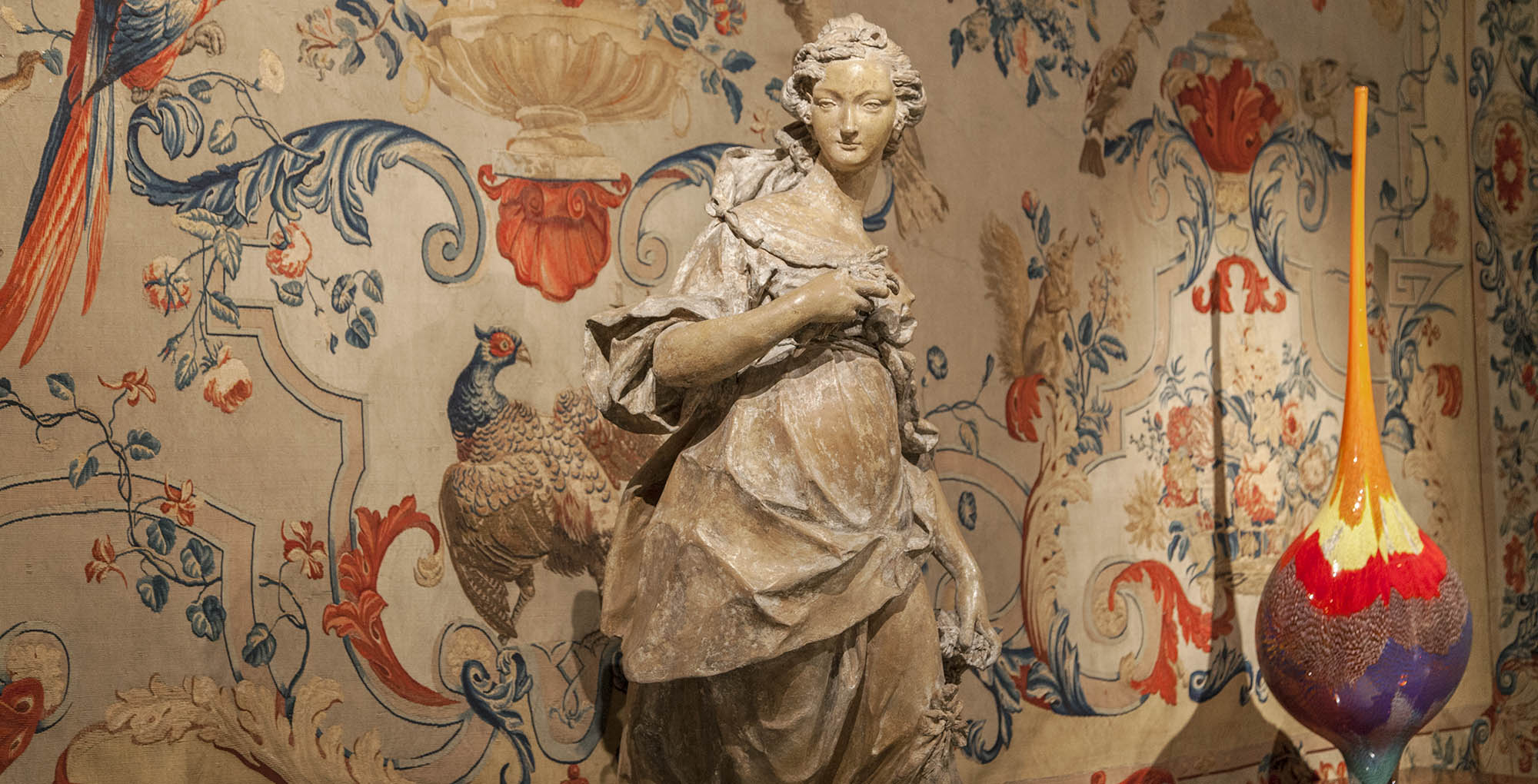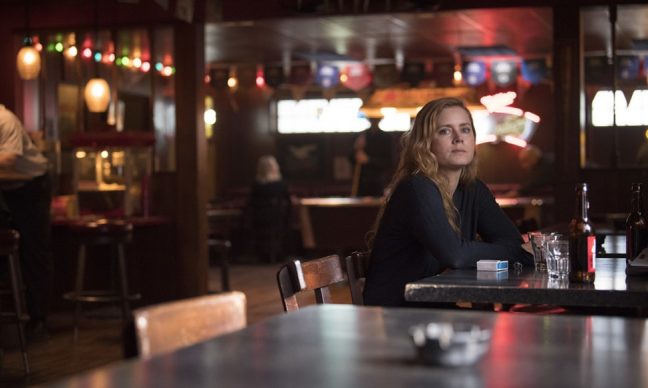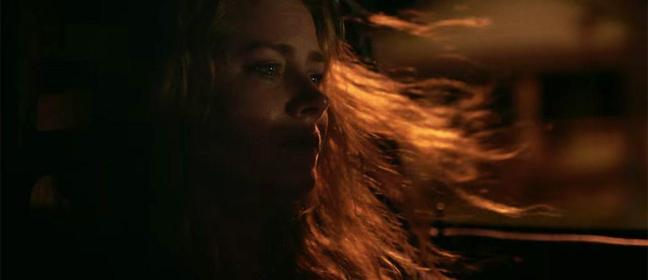
True Detective meets Pretty Little Lies in HBO’s Sharp Objects, an adaptation of Gillian Flynn’s first novel.
Gillian Flynn is all about peeling back the pretty veneer of things and taking a cold, nasty look at what lies beneath. Lord knows small towns have their fair share of deep darkness to mine, especially ones situated in the American Midwest and South. Bigotry is all too common, as is every Human vice. It just happens behind closed doors, behind sugary-sweet passive-agressiveness in Wind Gap, Missouri – recently the site of the murder/disappearance of two young girls. It’s a rich seam for director Jean-Marc Vallée, who’s been mining similar ore in a suburban setting on Big Little Lies.
It also happens to be the hometown of Camille Preaker (Amy Adams). We drop in on Camille while she’s dreaming – two little girls in mint-green dresses, rollerskating to a sprawling gingerbread Victorian estate on the edge of town. The two girls break in to find a woman who’s asleep, to wake her with a pinprick. Who happens to be Camille, jolting her out of sleep and into her waking reality as a reporter for the St. Louis Chronicle.
Dreams rubbing up against reality are central to “Vanish,” the first episode of the HBO 8-part mini-series. Camille’s past is as central to the plot, if not more so, as the girls’ disappearance. She ends up being assigned the story by her boss at the Chronicle, to bring some local color to what could possibly be a serial killer case. “Could be worth a Pulitzer,” he tantalizes. “Could help you get back on your feet.”
From what, we wonder? We don’t know. It’s not hard to imagine, however. Camille’s kind of a wreck. She’s drinking vodka in nearly every scene. “Vanish” gives us an idea of why she is this way, however, beginning with the death of her sister when she was a kid as well as her complicated relationship with her mother, played with Chantilly grace by Patricia Clarkson.
This sets the scene for Wind Gap, Missouri and the chilling murder/mystery of Sharp Objects. We’re going to get into some of the nitty-gritty after the jump, so if you haven’t seen Sharp Objects episode 1, “Vanish,” yet you might want to stop reading. There may be spoilers.
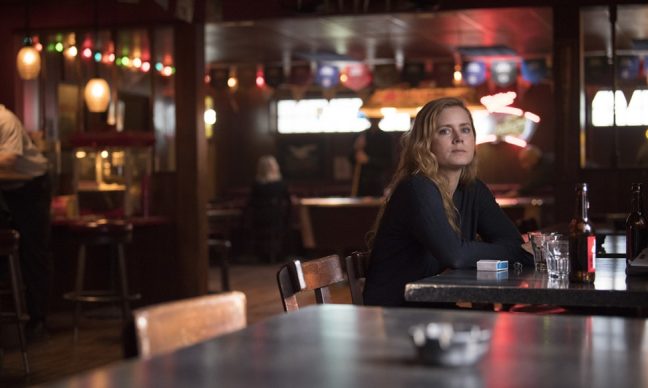
Sharp Objects Episode 1 review, “Vanish”
After much protest, Camille is sent back to her hometown of Wind Gap, Missouri to cover the story of the two missing/deceased girls. The first girl had gone missing six months previously, so the worst was being assumed in the case of Natalie Keene. Her boss (Miguel Sandoval) wants her to capture some local color and maybe get some people to open up. Camille grabs a bag full of airplane vodka bottles and hits the road for her hometown.
She clearly has a complicated relationship with the place. Most of her memories, which play out like ghostly after-images haunting the present throughout “Vanish” have a slightly sinister cast to them. They flash back to a scene of Camille finding a hunting shack in the woods, adorned in hardcore porn and weapons. She gets herself off to the memory in her dingy motel room. Camille is complex.
It is this complexity which makes the first episode of Sharp Objects such compelling viewing. It’s got a real Southern Gothic flavor. Even the secrets have secrets, it seems, in Wind Gap.
She visits the local Sheriff, Vickery (Matt Craven), who is none-too-pleased to have a big city reporter picking around the investigation. He’s rather hostile and stand-offish, giving the impression he doesn’t have many leads. “More like he’s pissed that he doesn’t have something to hide,” Camille observes. She goes to join with a local search party in the woods and runs into some old friends, including the friendly, day-drinking Jackie (Elizabeth Perkins). Almost everybody drinks as much as Camille, it seems, in her hometown. Including her uptight, controlling Mother, whom Jackie asks if she’s seen. “Not yet,” Camille replies. “I was just about to drop by.”
“I wish you would’ve called first,” is the first thing Adora Crellin (Patricia Clarkson) says after leaving Camille on the front step for an excoriatingly long time. Not exactly a warm welcome.
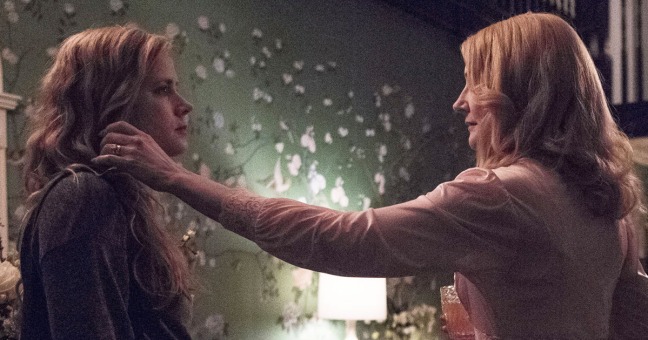
Camille is plagued by bad memories of her dead sister Marian and goes out to tie on one at the local tavern. She gets wasted on whiskey and runs into Det. Richard Willis (Chris Messina), who she’s been bantering with in a vaguely hostile way since the search party earlier that afternoon. She also sees John Keene (Taylor John Smith), the brother of the missing girl, who’s underage but getting a pass due to grief.
Camille passes out in her car while listening to “What Is And What Should Never Be.” She awakens to an icy lecture from her mother when she gets home. “Everything you do in Wind Gap reflects back on me,” she chastises Camille, who gets a little rest before going to meet the father of a dead girl.
Ann Nash’s father is more than a little strange and defensive when she interviews him. He snaps at one of his daughters and his wife is noticeably absent. When speaking of the day of his daughter’s disappearance, he lets out some hideously acerbic slurs and a questionable attitude towards death. He’s a suspect, for sure. As is John Keene, the brother of the missing girl, who just so happens to be across the street when they find the second body.
Camille chastises a new group of roller-skating teenagers taking dolls from a memorial when a cry goes out. The second body is found, ominously propped sitting up in a window in an alleyway. Camille is one of the first on the scene.
When she finally arrives home after the ordeal, she finds out that one of the rollerskating girls was her half-sister Amma (Eliza Scanlon). Adora’s been keeping Amma locked away like a nightingale in a gilded cage since the murders, not knowing of Amma’s double life. “Mama always said you were incorrigible,” purrs Amma. “I’m incorrigible, too. She just doesn’t know it.”
We end with a harrowing flashback to Camille’s sister’s funeral when she was a kid (played by the wonderful Sophia Lillis from IT). Everyone’s got hidden depths and torments in Wind Gap, it seems. Sharp Objects punctures the membrane and lets them bleed out.
This is going to be a stellar mini-series. The setting is compelling. The cinematography is superb. The soundtrack is top-notch (even the omnipresent Led Zeppelin on Camille’s phone). The acting is what takes the orange chiffon cake, however. There’s so many strong female actors and roles in Sharp Objects it boggles the mind. Gillian Flynn is known for deconstructing women’s roles in her books, showing their blemishes and hidden, hideous sides. It’s going to be so great to watch all of these talents playing off of one another. Amy Adams is incredible, so far, playing the stoic-but-tormented role to a T.
Sharp Objects blends the dreamy, haunting surrealism of David Lynch’s small town Americana with Gillian Flynn’s gritty gaze. This town has shadows and they will most likely all be shown over the duration of the series.
Sharp Objects plays at 8 PM on Sundays on HBO
Looking for more tv news, reviews, thoughts, and insights? Follow @for3stpunk on Twitter, Instagram, and Letterboxd!
Want to support quality, in-depth TV criticism? Every donation allows us to comment more fully on the world we’re living in.
